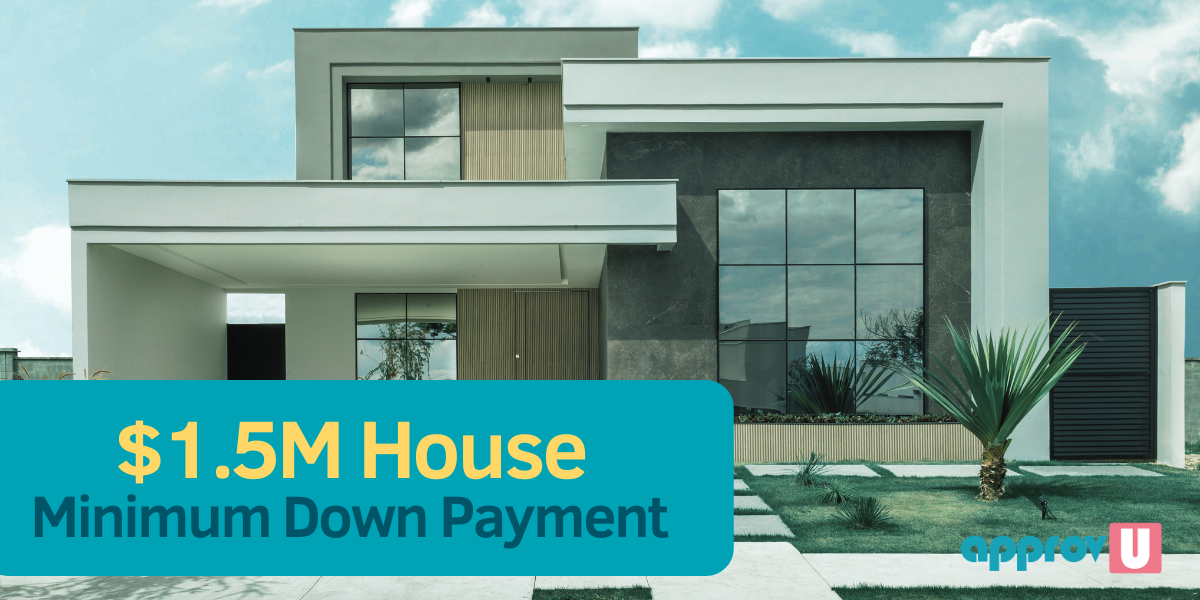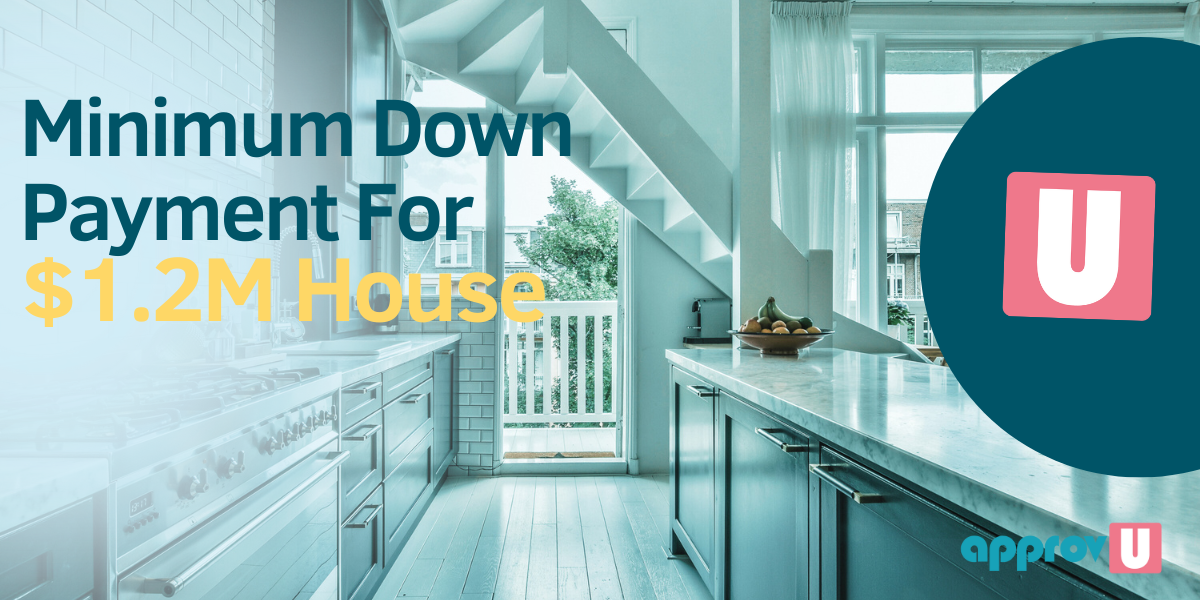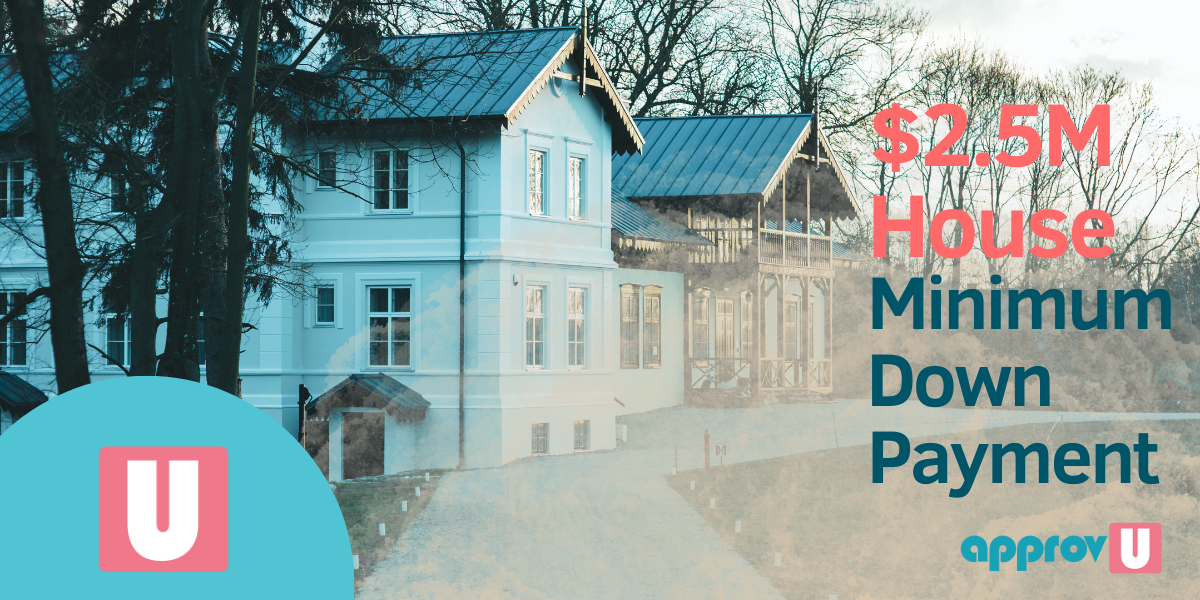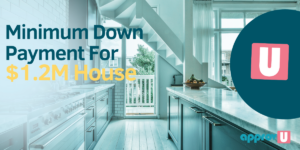Buying a $1.5 million home marks a significant financial milestone. Understanding the down payment requirements is crucial.
Stricter requirements apply to properties over $1 million.
Default mortgage insurance isn’t available for homes priced at or above $1 million.
This means a minimum 20% down payment, starting at $300,000 for your $1.5 million home.
You might face higher down payment demands depending on factors like lender policies.
This introduction equips you with essential knowledge for buying a high-value home.
Understanding the implications of a down payment empowers informed decisions in Canada’s real estate market.
Required Down Payment for a $1.5 Million Home in Canada: Overview
20% Down Required for $1M+ Properties
Buying a property over $1 million requires a clear understanding of down payment rules.
Such high-value properties don’t qualify for default mortgage insurance, which typically enables lower down payments.
However, this safety net no longer applies once the price exceeds $1 million.
Lenders May Request More Than 20% Down on a $1.5M House
The base down payment requirement for a $1.5 million home is 20%, meaning $300,000.
However, this is just the starting point.
Lenders might ask for a higher percentage, depending on factors like your financial health and market conditions.
Understanding the Sliding Scale
Understanding the sliding scale concept is crucial when purchasing a high-priced home like your $1.5 million property.
This scale is a financial tool that lenders use to determine the down payment required for homes at higher price points.
It is particularly useful for properties above the $1 million mark, where default mortgage insurance is not applicable.
The sliding scale lets lenders adjust the loan-to-value (LTV) ratio based on risk factors.
The LTV ratio is crucial, representing the portion of property value covered by your mortgage.
Lenders are cautious about high-priced homes due to the substantial investment and risk.
Factors Impacting the Sliding Scale for Mortgages
- Property Location: Lenders consider properties in major cities (like Toronto or Vancouver) less risky, often allowing for a lower down payment. Rural properties may require a higher down payment because they could be harder to sell if the borrower defaults on the mortgage.
- Property Price: The more expensive the home, the more likely the lender is to use a sliding scale. This is especially true for houses over $1 million. The lender wants to reduce their risk on high-value properties.
- Market Conditions: Lenders might be more flexible with their sliding scales when the real estate market is strong and stable. They might require larger down payments to protect themselves in a weaker market.
Factors Affecting the Down Payment for a $1.5 Million Home in Canada
Preparing to purchase a $1.5 million home involves considering several key factors influencing lenders’ down payment requirements.
Understanding these factors can streamline the mortgage process.
Credit Score
Your credit history significantly impacts your mortgage journey, reflecting your financial reliability.
A high credit score may lead to a smaller down payment requirement, as lenders perceive lower risk.
Conversely, a lower credit score may necessitate a larger down payment to offset risk and protect the lender’s investment.
Income Verification
The type and verification of your income affect down payment requirements.
Verifiable income reassures lenders of your financial stability, potentially leading to more favourable terms.
Conversely, non-verifiable or irregular income may require a larger down payment to mitigate perceived risk.
Property Usage
Whether the property is for personal use or investment impacts down payment requirements.
Owner-occupied homes typically have less strict requirements, while investment properties may require more upfront equity due to higher perceived risk.
Property Location
The property’s location influences down payment requirements.
Urban areas with high demand may allow lower down payments, while rural areas may require more upfront equity to mitigate risk.
Navigating these factors requires understanding their interaction with lender policies and the mortgage market.
Aligning your financial profile with these considerations helps prepare for the down payment on your $1.5 million home.
This ensures compliance with lender requirements and favourable mortgage terms.
Lender Insights on Down Payments for $1.5 Million Homes in Canada
Lenders consider several factors when determining down payment requirements for a high-value property like a $1.5 million house.
Understanding these considerations offers valuable insight into effectively financing your luxury home purchase.
Risk Management Through Down Payments
Lenders see down payments as crucial risk mitigators in high-value transactions.
A significant down payment reduces the lender’s risk exposure, as borrowers with more personal investment are less likely to default.
A typical minimum down payment for a $1.5 million house is 20%, or $300,000.
However, lenders may request more based on their risk assessment, ensuring protection in case of a property sale to recover loan amounts.
Location Impact on Marketability Risks
Property location significantly affects down payment requirements due to marketability risks.
Urban centers with high demand and liquidity pose lower risks, allowing lenders to meet minimum down payment requirements.
In contrast, rural areas face higher marketability risks.
This leads to potentially higher down payment demands to offset risks associated with slower market movements and reduced liquidity.
Saving Tips for a Down Payment on a $1.5 Million Home in Canada
Acquiring a $1.5 million home demands careful financial planning, especially for accumulating the sizable down payment required.
Here’s how to effectively prepare for this critical aspect of your home purchase.
- Set Clear Goals: Determine your exact down payment requirement—$300,000 for a 20% down payment on a $1.5 million house. Establish achievable savings targets to stay on course.
- Automate Savings: Schedule regular transfers to a high-yield savings account dedicated to your down payment. Automating savings ensures consistency and minimizes oversights.
- Prioritize Debt: Focus on paying off high-interest debts first to free up more funds for savings.
- Trim Expenses: Identify and cut unnecessary expenses to boost your savings rate. Consider downsizing or reducing discretionary spending.
- Explore Additional Income: Look into side jobs or freelance work to increase your income and accelerate your savings. Every extra dollar earned contributes to your down payment fund.
Financial Planning Tips for a Down Payment on a $1.5 Million Home in Canada
- Budgeting: Develop a thorough budget covering expenses, savings, and debt payments. A clear budget fosters disciplined spending and saving habits.
- Smart Investments: If your purchase is distant, consider investing in low-risk, liquid assets to grow your down payment over time. Consult a financial advisor to align investments with your risk tolerance and timeframe.
- Financial Tools: Use planning tools or seek advice to create a personalized savings plan that maximizes your potential and fits your homeownership goals.
- Stay Updated: Stay informed about market trends, interest rates, and real estate forecasts to make decisions that impact your savings and timing.
Additional Financial Considerations
When preparing to buy a $1.5 million property, it’s vital to consider more than just the down payment.
Understanding these extra costs ensures you’re fully ready for the financial commitments.
Closing Costs
These include legal fees, land transfer taxes, and appraisals.
They can be substantial for a $1.5 million house, so factor them into your budget early to avoid surprises at closing.
Mortgage Rates and Terms
Your down payment size can affect the rates and terms offered.
A larger down payment often means better terms, like lower interest rates, as it reduces the lender’s risk.
Discuss your options with a mortgage advisor to secure favourable terms.
Budgeting Holistically
Include all these expenses in your budget to make the purchase smoothly.
A comprehensive plan covering the down payment, closing costs, and mortgage details will prepare you for the purchase and ensure financial stability in the long run.
Final Thoughts on Securing a Down Payment for a $1.5 Million Home in Canada
Buying a $1.5 million house requires careful financial planning.
A substantial down payment (a minimum of $300,000) is a key part of your investment.
However, consider other costs like closing fees, fluctuating mortgage rates, and long-term financial obligations.
Understanding these elements lets you navigate this purchase with confidence.
Your meticulous planning is crucial. It ensures you’re ready to buy the house and handle the ongoing financial commitment.
This preparation is your greatest asset. It empowers you to make informed decisions and secure a valuable investment for your future.
















